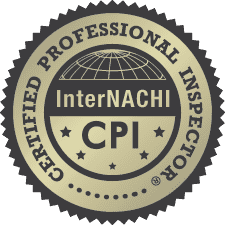Protecting Our Most Valuable Asset
SAFETY FOR OUR FUTURE
Our sustainable future relies heavily on our greatest asset-our children. It is our duty as adults, parents, grandparents, and guardians to keep them as safe as possible, but no matter how much we try and protect them, children seem to find numerous and creative ways of injuring themselves or other children. In fact, approximately 12 thousand children under the age of 18 die from preventable accidents every year, and roughly 9.2 million visit the emergency room for non-fatal injuries. Here a few more staggering statistics.
· Of children less than 1 year old, 2/3 of preventable deaths are due to suffocation
· In children ages 1-4, most preventable deaths in children are due to drowning
· In children ages 5-19, most preventable deaths are automobile accidents.
· Most non-fatal injuries after 1 year old are incurred by males
· 2.8 million non-fatal injuries are due to falls
There are numerous safeguards to protect our children, common sense being the most valuable. This article will address the use of Safety Devices in your home. Remember, if you have older children, be sure they re-secure safety devices, and also that no safety device is 100% child-proof; determined youngsters can and will disable them.
Use Safety Latches and locks for cabinets and drawers in bathrooms, kitchens, and other areas where dangers can lurk. This will help prevent access to medicines, cleaners, knives, and other items that could cause injury. Look for latches and locks that are fairly easy to use, but can withstand pulls, tugs, and attempts to access by the determined young mind. Even products with child-resistant packaging should be locked away-since no packaging is 100% childproof. Purchase and install latches that older children and adults will actually use, and are fairly easy to re-secure, they are completely ineffective if not used.
Safety gates can prevent falls down steps and keep children away from danger areas. Be sure and choose one that cannot be dislodged easily by toddlers, but adults can operate without difficulty. When using these at the top of stairs, choose gates that screw in the wall, which are more secure than “pressure gates”. Those old wooden accordion gates and pens can be dangerous. Safety gates should have the JPMA (Juvenile Products Manufacturers Association) seal displayed on them.
Door locks will deter children from entering rooms and other areas of danger, including swimming pools. These locks when put on safety gates for swimming pool access should be placed high, out of reach for youngsters. These locks should be used in addition to fences and alarms. Sliding glass doors with locks that need to be re-secured after use are often not effective enough. Even door knob covers which are common and inexpensive can be deciphered by the curious young mind, if in graspable reach.
Anti-scald devices for faucets and showerheads are a good idea for children as well as adults. The installation of these, in addition to setting your water heater to 120 degrees, can help prevent a nasty burn from hot water.
Smoke detectors should be placed on each level, and inside or outside every bedroom door. These are by far the most useful life savers in the event of a house fire. Check them every month, replace batteries every year, and replace older (more than 5 yrs old) smoke detectors. Hardwired smoke detectors work best.
CO detectors should be used in homes containing fossil fuel heating or cooking appliances, i.e., natural gas, propane, or oil, and in homes with attached garages. These should also be place just outside of bedrooms.
Window guards and safety netting can help prevent falls from balconies, decks, and windows. Check these often to make sure they are properly secured and maintained. Vertical guards or rails should be no more than 4 inches apart. Screens are to keep bugs out-not to keep children in. Also, make sure there is at least one window that can be easily used for escape in case of a house fire.
Corner bumpers around fireplace hearths and furniture edges can help prevent injuries from falling against them. Use bumpers that stay securely attached.
Receptacle and Outlet covers can prevent shocks and electrocution. Curious children will stick fingers, forks, toys, or anything else that looks like it will fit into an outlet. Choose covers that cannot be easily removed, and are large enough to not become a choking hazard if they are removed by the curious toddler. Some outlets have safety devices built in, and there are devices that can be installed over outlets that have a sensor to shut off power when fingers, forks, or other objects come near it.
Window Blind cords should be cut to prevent strangling or hanging by the loops in the cording. Safety tassels on miniblinds and tension devices on vertical blinds and drapery cords can prevent strangulation by the cord loops. Inner stops can help prevent hanging or strangulation in the inner cords of blinds. Cordless would even be better. When purchasing new blinds, ask or look for these built in safety features.
Door Stops can help prevent little fingers and hands from being injured or pinched in a closing door. Be sure they are easy to use, and are not a choking hazard for the small toddler.
Cell phones or cordless phones can make it a little easier to keep that watchful eye on young children, especially in bathtubs, swimming pools, or other dangerous areas. Cordless phones and cell phones can enable you to answer a call without leaving the vicinity to answer it. It’s best to minimize distractions, including phone calls, when you are watching a small child in or near the water.
Remember, you protect your bank account, computer, and automobile with locks, passwords, and other means to prevent unwanted or unauthorized use. So protect your most valuable asset-your children, by these few simple safety measures.
Your future will thank you!
![]()










